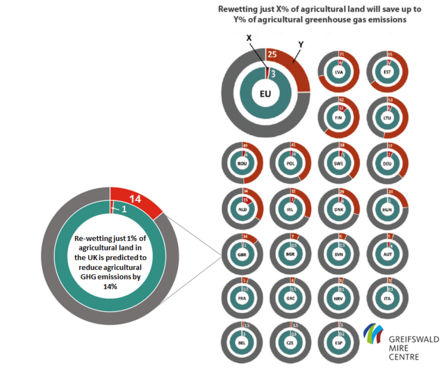The start of 2020 saw the UK leave the EU but the IUCN UK Peatland Programme continues to feed into the international peatland agenda. Peatlands feature strongly in the global biodiversity and climate change agreements and are the focus for resolutions in the United Nations and IUCN. Much of the EU legislation giving protection for peatlands comes from wider international obligations such as the Bonn, Berne and Ramsar Conventions that continue to apply to the UK.
A priority for the UK now must be to forge suitable replacements for the many £100’s of millions support peatlands gained from EU funding, including EU Life and rural development funds (including the Common Agriculture Policy), that delivered many highly successful peatland restoration projects as well as other funds for nature conservation, water management, climate change and research. The UK is seen as leading the way in Europe for having a complete strategic framework for peatlands: The Scottish Peatland Plan is already guiding Peatland Action, an England Peatland Strategy is due for release and strategies in Wales and Northern Ireland are under development.
The EU framework for UK land management, funding and policy also brought problems for peatlands, resulting in many failings for their conservation and sustainable management. Our summary brief on Supporting sustainable and healthy peatlands after Brexit including the opportunity to reform the current CAP system is complimented by a new position paper - ‘Peatlands in the EU- Common Agriculture Policy (CAP) after 2020’ by Greifswald Mire Centre, National University of Ireland and Wetlands International, supported by IUCN UK PP. This sets out the key goals of ensuring future eligibility for wet peatlands to receive payments whilst avoiding any support for peatland drainage. The UK is amongst the largest peatland emitters in the EU, with drained peatlands contributing more than 14% of total emissions from agriculture and agricultural land use (see figure below).
As an independent UK moves towards post-CAP agricultural policy with the new Agriculture Bill and development of an Environmental Land Management Scheme (ELMs) in England and other developing CAP replacements elsewhere in the UK, the recommendations of the briefing note are a timely reminder of the importance of adapting practices on our agricultural peatlands. The transition of drained peatlands under productive use to wetland agriculture, such as the arable peatlands of the East Anglia Fens, will be essential to enhance soil and food security and ensure agriculture is able to fully contribute towards the UKs Net Zero ambitions.

